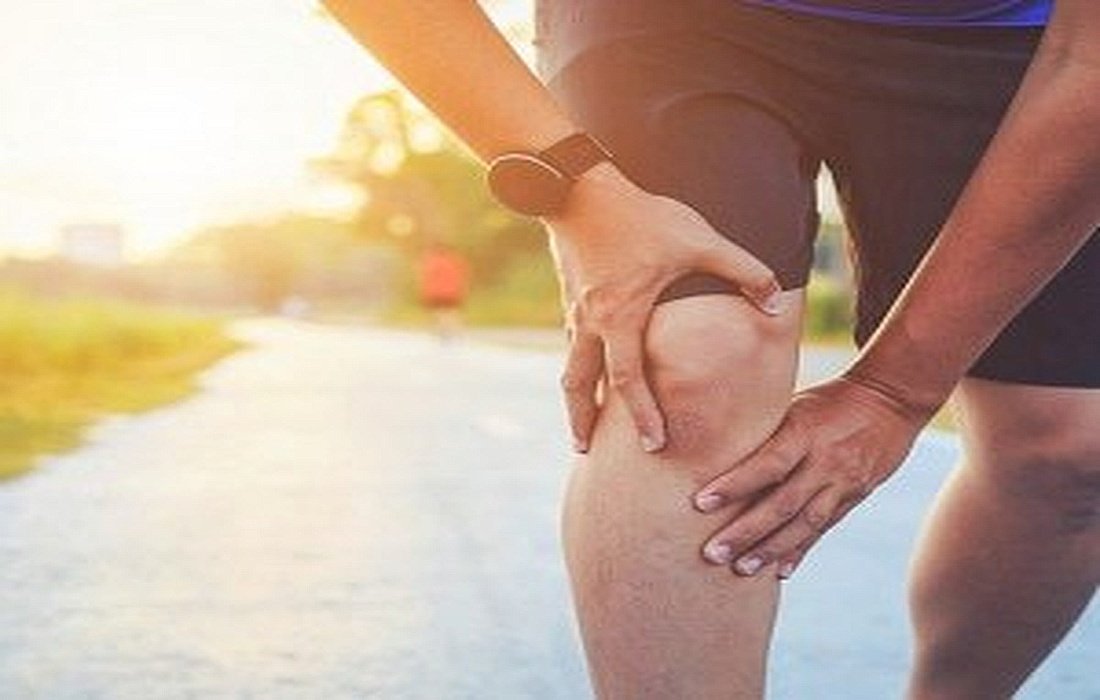All aboutKnee PainFrom causes to treatment and prevention
Knee pain disrupts natural movement quickly and causes problems for individuals, but


Why does this pain occur?
What are the signs and symptoms indicating knee pain?
How can we relieve knee pain at home with herbal remedies?Knee PainHow to relieve it?
What is the best way to prevent knee pain?
Knee pain can have different causes depending on age. Generally, knee pain is classified into two categories: primary knee pain and secondary knee pain.
Secondary knee pain has secondary causes, for example, someone who has suffered a knee fracture.
In some cases, knee pain is primary, such as for individuals with knee joint inflammation (arthritis) and damaged knee cartilage.
Pain sensations are transmitted through nerves. The nerves that transmit knee pain are close to those that transmit pain sensations from the hip and ankle, so knee joint pain may be felt in the hip or ankle, or vice versa, where the source of pain in the hip or ankle may be felt as knee pain. Knee joint pain can be classified into two types: acute pain and chronic pain.
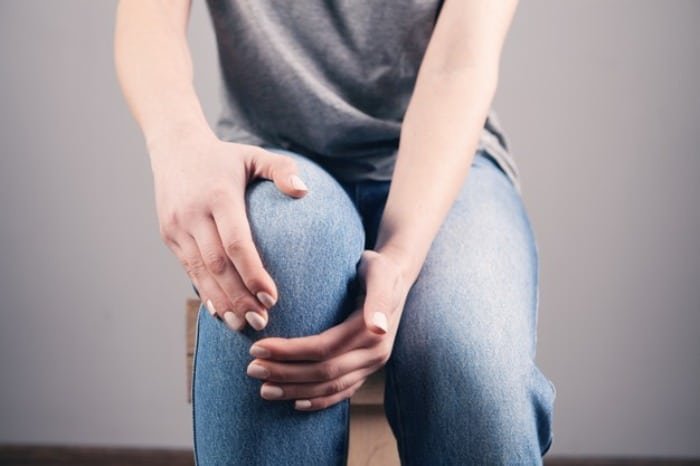
What you should know about the causes and types of knee pain
The symptoms indicating knee pain
- Redness and warmth around the knee
- Difficulty walking due to knee instability
- Limping due to pain and discomfort
- Inability to straighten the knee
- Knee locking (inability to bend the knee)
- Swelling and stiffness
- Cracking or popping sounds from the knee
- Sensitivity to touch around the knee
Causes of chronic knee pain and types of knee pain
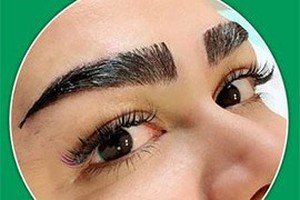

Knee pain can be categorized based on its cause, including:
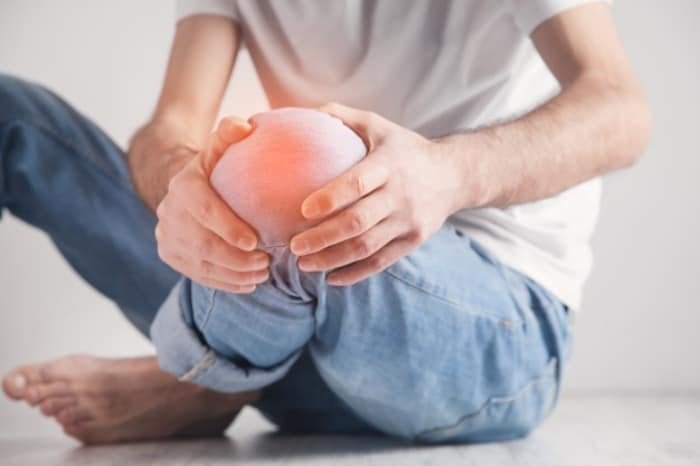
Causes and symptoms of knee pain in men and women
Knee PainOsteoarthritisAlso known as knee wear and tear.
Knee osteoarthritisOccurs due to the destruction of joint cartilage, leading to severe cases where the meniscus is also damaged. Symptoms include knee pain, limited motion, and knee swelling. Diagnosing wear and tear of the knee can be done through examination and simple X-rays, with treatment generally addressing knee pain. In severe cases, the knee joint may be replaced with an artificial joint.Knee pain due to Osgood-Schlatter disease
Osgood-Schlatter disease occurs in athletic teenagers and is caused by repeated pressure on the knee. In this condition, the bump below the kneecap becomes painful and swollen. Treatment generally involves common knee pain remedies, as well as temporary use of a brace and reduced physical activity.
Knee Pain and Patellar Chondromalacia
Patellar chondromalacia is commonly seen in people who run a lot, more often in women. In this condition, the kneecap shifts from its usual position, damaging its cartilage due to repetitive movements at the front of the knee. Symptoms of chondromalacia, or softening of the kneecap cartilage, include knee pain, especially after sitting for long periods. Knee movements may also be accompanied by sounds. Treatment typically involves general knee pain remedies and strengthening the quadriceps muscles.
Knee Pain
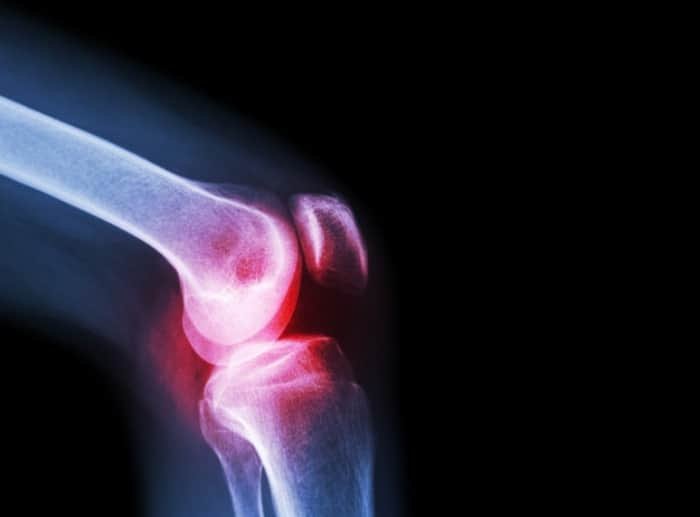
What is Patellar Chondromalacia and what symptoms does it have?Advertisement
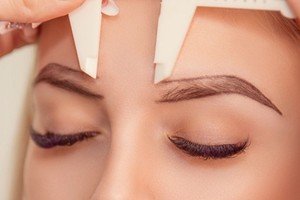

rheumatismRheumatism usually affects the entire body, with joints being major areas of involvement. The knee joint can also be affected. Major symptoms of rheumatic involvement in the knee include pain and swelling. In advanced stages, the knee joint may deform. Treatment for knee rheumatism involves medication and exercises to increase knee flexibility and strengthen surrounding muscles. In severe cases, a joint replacement may be necessary for treatment.
Knee pain due to
bursitisKneeAround the knee joint are sacs called bursae. These sacs can become inflamed and painful due to various reasons, such as infection or trauma. This condition is referred to as bursitis. Symptoms of bursitis in the knee typically include knee pain and localized swelling in a part of the knee. Treatment for knee bursitis usually involves general knee pain management. In some cases, surgical treatment may be necessary.
Infection and knee pain
Knee joint infection is a medical emergency. Symptoms of knee infection appear as knee pain, swelling, and fever. Treatment often involves surgery and the use of antibiotics. Sometimes, knee infections can become chronic, which may also damage surrounding bone structures. In chronic cases, treatment may involve a combination of surgery and antibiotic use.
Jumpers Knee and Knee PainJumpers refers to athletes who perform a lot of jumping motions. Sports such as volleyball and basketball fall into this category. In these athletes, the tendon under the kneecap becomes inflamed and painful. The hallmark symptom of this condition is knee pain at the tendon site, which worsens during sports. Treatment typically involves general knee pain remedies and strengthening the surrounding knee muscles through specific exercises.Type of Knee Pain in Athletes
Iliotibial Band Syndrome and Knee Pain
The iliotibial band is a strong tissue band that runs from the hip to just below the knee. This band is located on the outer part of the knee. With knee movement, the band repeatedly rubs against a bony prominence on the outside of the knee joint, causing knee pain and swelling. This condition is more common in individuals with tight and short iliotibial bands. Symptoms include pain on the outer surface of the thigh, often seen in long-distance runners. The pain usually starts 10-15 minutes after beginning to run and improves after resting. Treatment typically involves exercises to stretch the iliotibial band to loosen it.
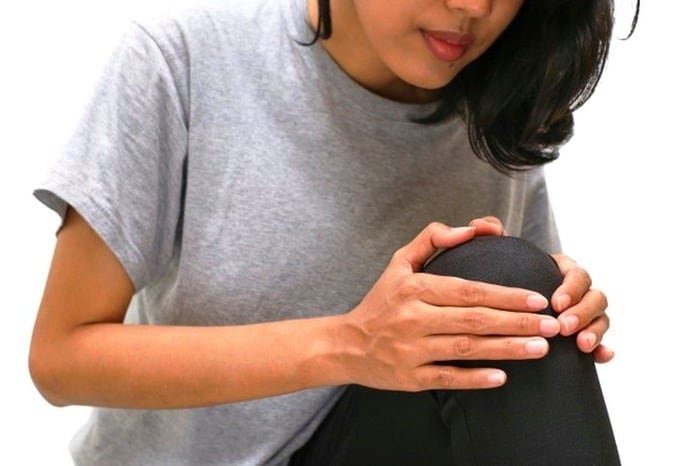
Advertisement
Eyebrow transplant in 1 day + easy payment options!😍 (with precise face analysis)
Consultation appointmentHome Remedies for Knee PainBesides medical and exercise treatments provided by specialists, there are simple and convenient home remedies that we will share for treating knee pain naturally.


Red Pepper
Herbal and natural knee pain remedy:
Red pepper contains a substance called capsaicin, which acts like a pain reliever in the body. Capsaicin generates warmth and reduces pain. To use it, mix two tablespoons of red pepper powder with half a cup of olive oil. Apply this mixture to the painful knee area twice a day for two weeks. Additionally, you can add a quarter or half a cup of red pepper powder to a cup of apple cider vinegar and apply it to the area for 20 minutes. Repeat this twice daily to reduce swelling.
Herbal Treatment for Knee Pain with Red Pepper
Treatment and relief of knee pain
Apple Cider VinegarThis helps dissolve deposits and toxins accumulated in the knee due to its alkaline properties. Furthermore, it aids in restoring joint lubrication, thus reducing pain and increasing mobility. For this, mix two teaspoons of apple cider vinegar with two cups of purified water. Drink this solution throughout the day until complete recovery. You can add two cups of apple cider vinegar to a hot bath and soak your knees for 30 minutes daily. Alternatively, mix a tablespoon of apple cider vinegar with an equal amount of olive oil and massage the knee twice a day until the pain subsides.
Massagewith apple cider vinegar.Ginger can also relieve knee pain:If knee pain is due to arthritis, muscle strain, or injury, ginger is an effective remedy. The effectiveness of ginger in this regard is attributed to its anti-inflammatory properties. Place a small piece of ginger in a cup of water and boil for 10 minutes. Strain the solution and add a little honey and lemon juice. Drink two to three cups of this solution daily until the pain improves. You can also massage the painful area with ginger oil.Traditional medicine approach for treating knee pain using gingerTurmeric is a powerful spice for treating knee pain:It has pain-relieving effects. Turmeric contains a substance called curcumin, which has anti-inflammatory properties and is a strong antioxidant that helps reduce pain. Furthermore, the National Center for Complementary and Integrative Health (NCCAM) reports that turmeric may slow the progression of rheumatoid arthritis, which is one of the causes of knee pain. For this, put half a tablespoon of ginger and the same amount of turmeric in a cup of water and boil for ten minutes. Strain the solution and add a little honey to it and take it twice daily. Alternatively, boil a tablespoon of turmeric in a glass of milk, sweeten with a little honey, and take it once a day. Another option is to take turmeric capsules of 200 or 250 mg three times a day. Continue these treatments until the pain improves.

How to use turmeric for treating knee pain at home
AdvertisementHalf boots only 639,000 Tomans 🔥 30% discount!! Buy with discountNote:
Turmeric may thin the blood. This treatment is not suitable for those taking blood thinners.How to treat knee pain with lemon?Lemon is useful for alleviating arthritic pain. The citric acid in lemon helps dissolve uric acid crystals in certain types of arthritis. To use, cut a lemon into small pieces, wrap them in a cotton cloth, and roll it in warm sesame oil, then apply it to the painful knee area for 10 minutes. Repeat this daily until the pain subsides. Drinking diluted lemon water in the morning before breakfast is also beneficial.
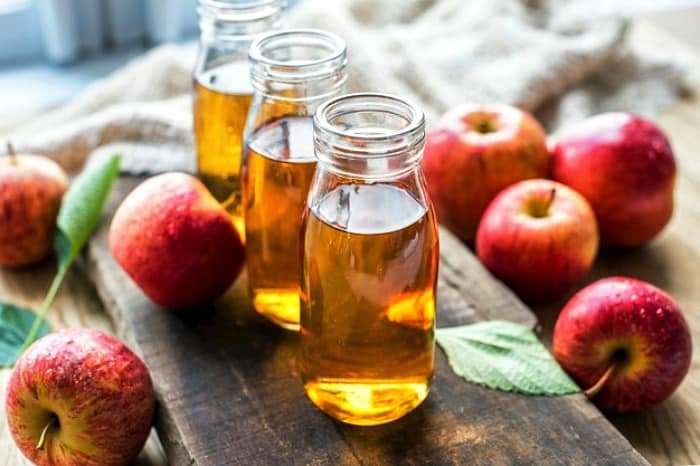


Massaging with warm mustard oil can help relieve pain and improve blood circulation in the painful area. For this, heat two tablespoons of mustard oil. Crush a garlic clove and sauté in it until golden. Let it cool and strain the oil. Massage the painful area with this oil in a circular motion. Wrap the knee with a cloth and apply a warm compress for a few minutes. Repeat this twice a day for two weeks.
Mustard oil and treating knee pain without medication
AdvertisementHigh-top shoes only 699,000 Tomans 🔥 30% discount!!Place an orderMethod of treating knee pain withFenugreek Seeds
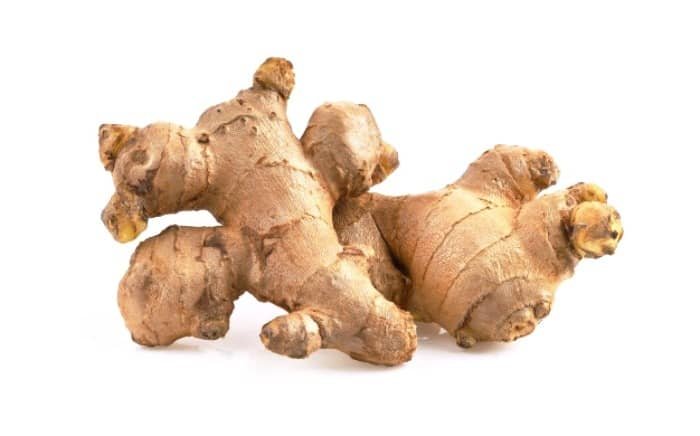
Fenugreek seeds are warm in nature and are very useful for alleviating knee pain caused by arthritis. For this, soak a teaspoon of fenugreek seeds in purified water overnight. The next morning, discard the water and chew the seeds. You can also roast a handful of seeds, then grind them. Store the powder in a closed jar and mix a teaspoon of it with some water to form a paste. Apply it to the painful area for 30 minutes, then wash with warm water. Do this treatment twice a day for a week.
Eucalyptus Oil
and relieving knee pain:
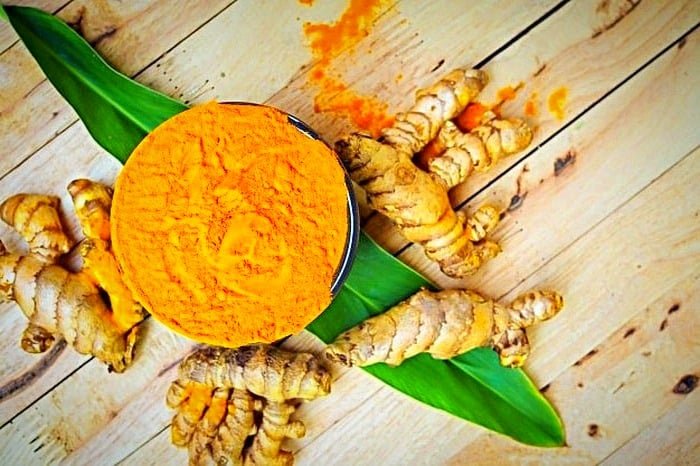
Eucalyptus oil has soothing properties and helps improve pain. Mix 5 to 7 drops of eucalyptus oil with the same amount of peppermint oil. Then add two tablespoons of olive oil. Store this mixture in a dark bottle away from sunlight. Whenever you feel pain in the knee, massage the painful area with this oil, ensuring the oil is fully absorbed into the skin.


Buy with discountWays to prevent knee pain
Maintaining a balanced body weight to prevent knee pain: Obesity can lead to osteoarthritis, which causes knee pain.
Losing weightis the best exercise.Wearing flat shoes: High-heeled shoes can cause heel problems. We recommend wearing flat shoes to prevent knee pain.
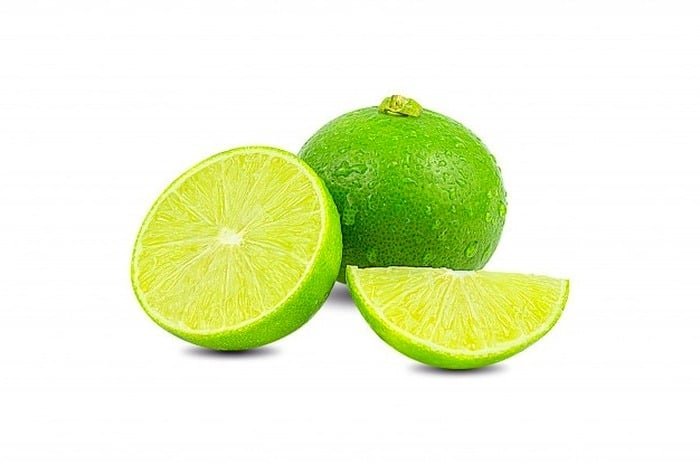
Regular exercise: Exercise strengthens the knees and prevents pain; do knee exercises with the help of a coach to prevent knee pain in the future.
Avoiding prolonged immobility of the legs: A common misconception is that knee pain results from excessive exercise. If you sit for long periods at work, this inactivity can lead to muscle stiffness and knee pain.Regularly consuming
foods rich in calcium: To prevent knee pain, you should maintain a calcium-rich diet. We recommend that women consume eggs, fish, cheese,and yogurtto strengthen their bones and prevent knee pain.
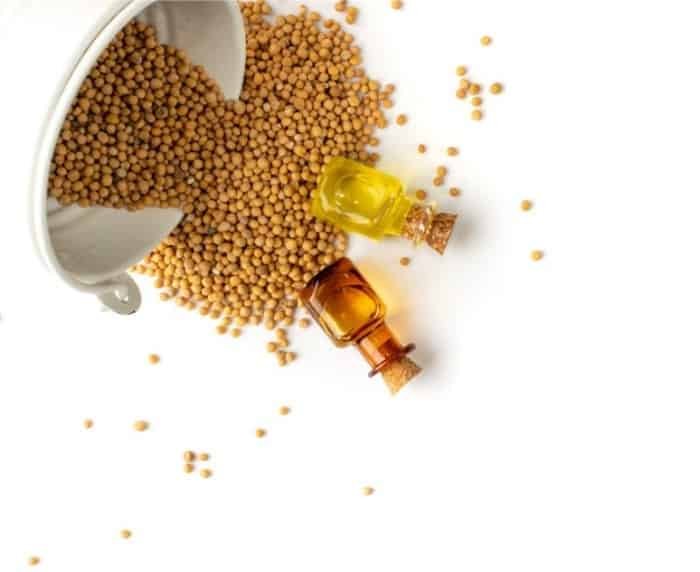
Last Second Travel Tours


Types of Knee PainDense eyebrow transplant in 1 session with easy payment options!😍 No pain or bleedingyn-ad
Iketant
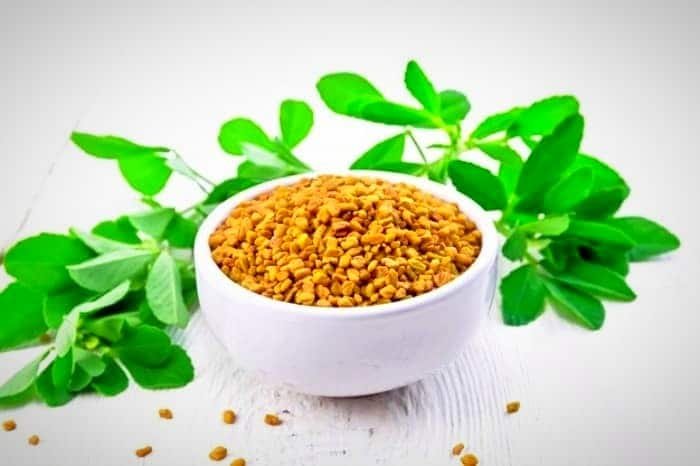
Knee PainTypes of Knee PainKnee Pain
Patellar PainAre your eyebrows thinning? Get natural eyebrows in one session with easy payments!😍 Interest-free installmentsyn-ad
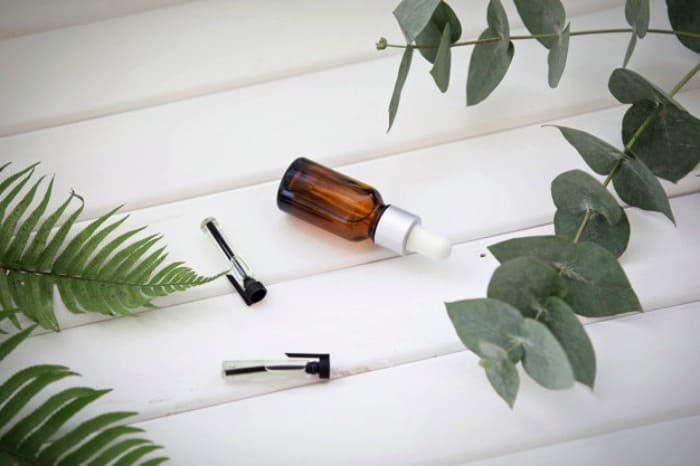
Iketant


yn-ad
IketantTreatment for Knee PainTreatment for Knee Pain with Red Pepper
Treatment for Knee Pain
Treatment for Knee Pain with Apple Cider Vinegar
Eyebrow transplant in 1 session with easy payment options!😍
yn-adIketantTreatment for Knee PainTreatment for Knee Pain with GingerTreatment for Knee Pain



